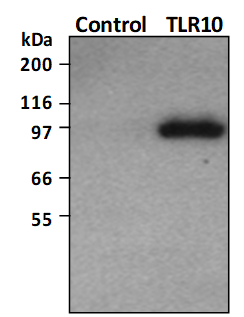Human PARP-3 / PARP3 Recombinant Protein (His & GST Tag)(Discontinued)
Shipping Info:
For estimated delivery dates, please contact us at [email protected]
| Amount : | 100 µg |
| Purification : | > 85 % as determined by SDS-PAGE |
| Content : | Formulation Lyophilized from sterile 20mM Tris, 500mM NaCl, pH 8.0, 10% gly Normally 5 % - 8 % trehalose, mannitol and 0.01% Tween80 are added as protectants before lyophilization. |
| Storage condition : | Store it under sterile conditions at -20°C to -80°C. It is recommended that the protein be aliquoted for optimal storage. Avoid repeated freeze-thaw cycles. |
| AA sequence : | Met1-Leu533 |
| Alternative Name : | ADPRT3 Protein, ADPRTL2 Protein, ADPRTL3 Protein, ARTD3 Protein, IRT1 Protein, PADPRT-3 Protein, |
Source : Baculovirus-Insect Cells
Poly(ADP-ribose) polymerase 3 (PARP3) is an important member of the PARP family and shares high structural similarities with both PARP1 and PARP2. Poly(ADP-ribose) polymerase 3 (PARP3), a critical player in cellular response to DNA double-strand breaks (DSBs), plays an essential role in the maintenance of genome integrity. The ADP ribosyl transferase [poly(ADP-ribose) polymerase] ARTD3(PARP3) is a newly characterized member of the ARTD(PARP) family that catalyzes the reaction of ADP ribosylation, a key posttranslational modification of proteins involved in different signaling pathways from DNA damage to energy metabolism and organismal memory.
Poly(ADP-ribose) polymerase 3 (PARP3) is an important member of the PARP family and shares high structural similarities with both PARP1 and PARP2. Poly(ADP-ribose) polymerase 3 (PARP3), a critical player in cellular response to DNA double-strand breaks (DSBs), plays an essential role in the maintenance of genome integrity. The ADP ribosyl transferase [poly(ADP-ribose) polymerase] ARTD3(PARP3) is a newly characterized member of the ARTD(PARP) family that catalyzes the reaction of ADP ribosylation, a key posttranslational modification of proteins involved in different signaling pathways from DNA damage to energy metabolism and organismal memory.
Endotoxin :< 1.0 EU per µg of the protein as determined by the LAL method
For Research Use Only. Not for use in diagnostic/therapeutics procedures.
|
There are currently no product reviews
|
















.png)










